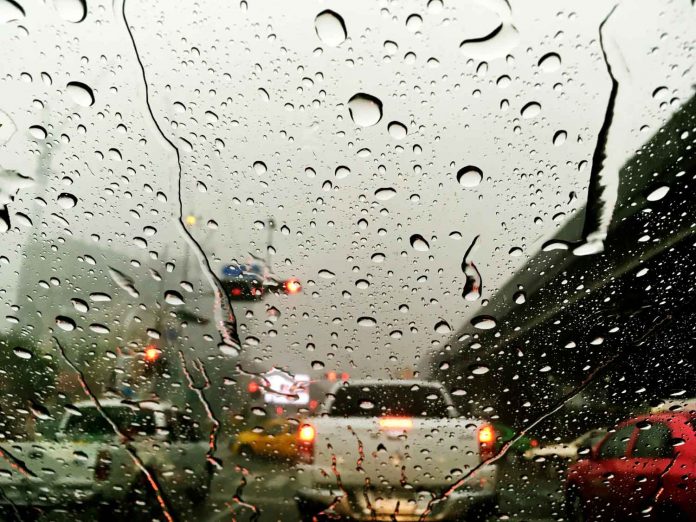To enhance schools’ ability to prevent accidents and respond to emergencies, the Hainan Provincial Department of Education has released two key documents:
- “Guidelines for Class Suspension in Hainan’s Education System During Extreme Weather Events (Draft for Public Comment)” (hereafter referred to as the “Guidelines”).
- “Emergency Plan for Flood, Wind, and Drought Prevention in Hainan’s Education System (Draft for Public Comment)” (hereafter referred to as the “Plan”).
These documents aim to define the conditions for suspending and resuming classes due to typhoons and heavy rain.
Guidelines for Class Suspension During Extreme Weather
The “Guidelines” apply to schools at all levels (including kindergartens) in areas where the meteorological department has issued typhoon red, orange, or yellow warnings, or heavy rain red or orange warnings (collectively referred to as “typhoon and heavy rain warnings”). However, these guidelines do not apply to national or provincial exams scheduled after such warnings have been issued.
Key Measures:
- During typhoon or heavy rain warnings that reach the suspension threshold, schools cannot require parents to pick up their children unless the parents request it.
- For students who need to stay at school due to special circumstances, schools must assign staff to ensure their care and basic needs.
- Schools should not introduce new lessons during suspension periods and must ensure students who miss school are given equal learning opportunities.
- Students cannot be penalized for attendance issues caused by class suspensions.
- Schools must allow flexible student pick-up times to avoid disrupting parents’ work schedules. Parents may pick up children at any time between the suspension signal and the usual school dismissal time.
Typhoon Suspension and Resumption Criteria:
Suspension:
- Kindergartens suspend classes when a yellow or higher typhoon warning is issued.
- Primary and secondary schools (including vocational schools) and universities suspend classes when an orange or higher typhoon warning is issued.
Resumption:
- Classes may resume only after the warning is lifted, provided water, electricity, communications, and transportation have been restored and other safety conditions are met.
- Schools must develop a scientific plan for resuming classes based on local conditions.
- Local education departments must report school suspension and resumption decisions within one hour of implementation to the provincial education department.
Heavy Rain Suspension and Resumption Criteria:
Due to the intense and short-lived nature of heavy rain in Hainan, local governments must establish an automatic suspension mechanism based on weather alerts.
Resumption: Schools should only resume classes once safety is ensured, based on local conditions. Schools must report all suspension and resumption actions promptly to the provincial education department.
The “Guidelines” introduce a tiered suspension system for heavy rain warnings:
Orange Warning Response:
- Schools must inform parents and students about the warning and potential hazards through messaging groups or other communication channels.
- Parents and schools should jointly decide whether students should stay home, leave school early, or return to school.
- Schools cannot mark students late or absent due to these arrangements.
Red Warning Response:
- Schools must immediately inform parents and students about the warning and any risks.
- Schools in affected areas automatically suspend classes.
- Students already at school must follow school instructions, while those still at home should not go to school. Students in transit should find a safe location to wait.
- Schools cannot penalize students for attendance issues due to weather-related class suspensions.
Emergency Plan for Flood, Wind, and Drought Prevention
The “Plan” outlines measures for preventing and responding to sudden weather-related disasters affecting Hainan’s education system.
Key Measures:
- Establish a pre-disaster warning system, ensuring education authorities stay in close contact with disaster prevention agencies, meteorology departments, and water management authorities.
- Once a warning is issued, local education departments must act swiftly, advising schools on whether to suspend or resume classes.
- Schools and parents must share responsibility for student safety.
Emergency Response Levels:
The “Plan” categorizes emergency responses into four levels based on the severity of typhoons and heavy rain:
Level IV Response (Minor Emergency):
Activated when a Level IV typhoon warning is issued or when the Provincial Disaster Prevention and Reduction Committee starts a Level IV emergency response.
Level III Response (Moderate Emergency):
Activated when a Level III typhoon warning is issued or a Level III emergency response is initiated.
All school construction projects must be halted, and at-risk structures should be reinforced or removed.
Schools must relocate valuable equipment from low-lying areas to prevent flood damage.
Level II Response (Major Emergency):
Activated when a Level II typhoon or heavy rain warning is issued.
Schools must follow the “Guidelines” for class suspensions.
Universities in affected areas should suspend classes and take precautionary measures.
Level I Response (Severe Emergency):
Activated when a Level I typhoon or heavy rain warning is issued.
School leaders must remain on-site to oversee emergency management.
Schools must ensure student safety and inform guardians of their status.
Once the weather emergency is under control, schools must resume normal operations as soon as possible. Education departments and schools must submit a detailed report on their emergency response within 48 hours and update their disaster response plans accordingly.
Related article: Understanding Your Rights: Prepaid Cards and Consumer Protection








